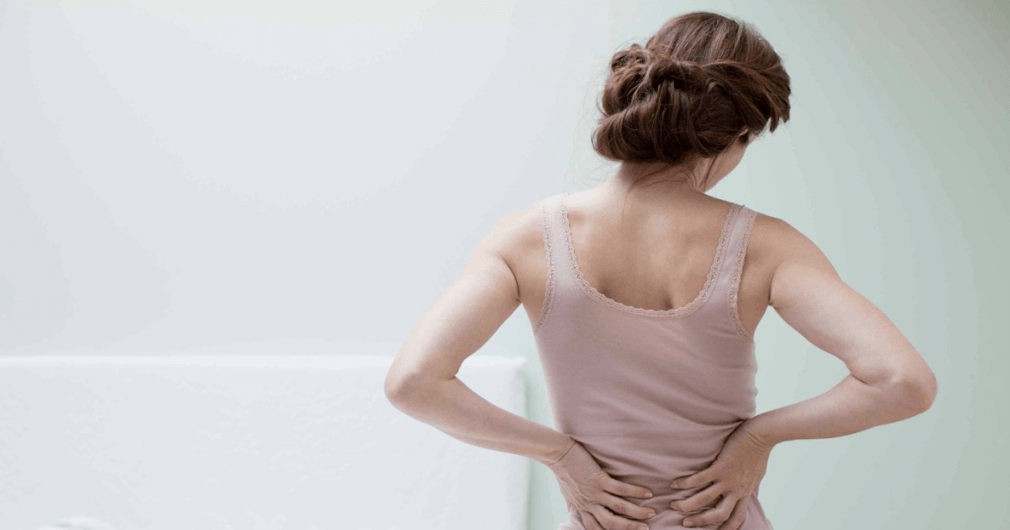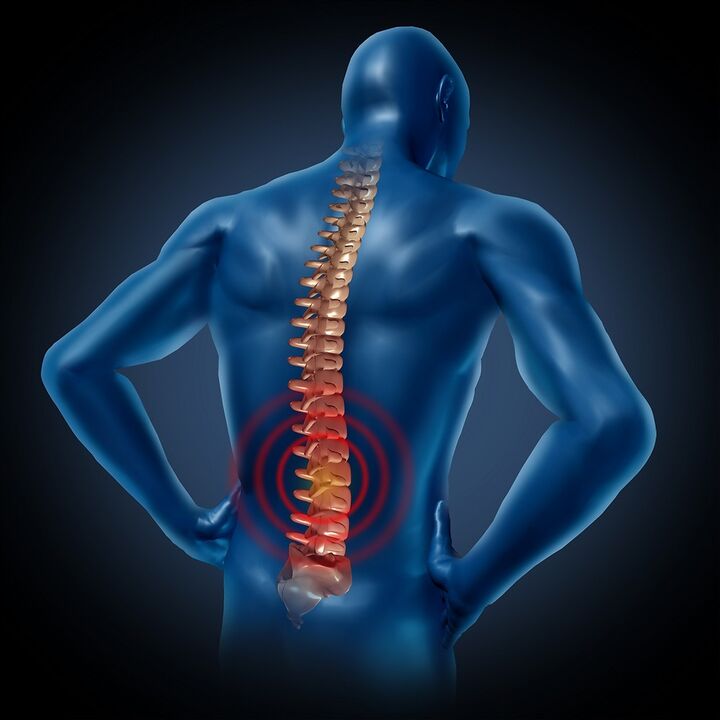Back pain is slightly less common than headache. Every adult has experienced this feeling at least once. Most often, the neck and lower back are affected. Doctors attribute this to a gradual reduction in people's physical activity because many people work and relax on the computer. This is the reason for the appearance of chronic degenerative diseases of the musculoskeletal system, which are the most common cause of back pain. Early examination and treatment, regular physical activity and normalization of body weight will help get rid of the discomfort and regain the joy of movement.

general information
The high frequency of back pain is related to its anatomy. The base is the spine. The cartilaginous discs are located between the vertebrae, which perform a shock-absorbing function. Additional skeleton is provided by muscles and ligaments. The spinal cord passes into the spine, from which the paired roots extend, hydrating almost all organs and tissues.
A pathological process in any of the structures of the back, as well as the internal organs associated with it by nerve fibers, can cause pain. Often, a doctor must make a thorough diagnosis to find out its source.
The reasons
Most of the conditions that cause back pain are chronic. They start gradually and are asymptomatic for a long time.
Among the external and internal causes that can cause deterioration, the most common are:
- increased load on the spine in the context of frequent weight lifting or overweight.
- metabolic disorders
- posture disorders and diseases of the musculoskeletal system (for example, joints of the hip joint or flat feet), leading to uneven load distribution.
- hypothermia?
- infectious and autoimmune inflammatory processes.
- volumetric formations (tumors, abscesses)
- pathology of the internal organs of the chest or abdominal cavity.
Illnesses
Back pain can be a symptom of many diseases that can be divided into different groups.
Pathology of the spine or joints
This is the most common cause of back pain. Most diseases are associated with high and / or uneven load on the spine:
- Osteochondrosis: the cartilaginous discs between the vertebrae begin to collapse, thin, and are replaced by bone tissue. As a result, the quenching function of the spine suffers and the spinal cord or its root is often compressed.
- Intervertebral hernia: the central part of the intervertebral disc protrudes towards the spinal cord, compressing it. The problem often arises in the context of advanced osteochondrosis.
- Ankylosing spondylitis: autoimmune inflammation of the joints and ligaments of the spine, leading to painful spasms of the surrounding muscles. over time, it becomes the cause of the spinach of the vertebrae together.
- Spondylolisthesis: displacement of the vertebrae from their normal position, which can lead to compression of the roots or spinal cord.
- Rheumatoid arthritis: inflammation of the joints autoimmune nature. most often affects the cervical spine.
- Osteomyelitis: inflammation of the bone tissue.
Muscle tissue pathology
Muscle tissue is often involved in the pathological process in the pathology of bone tissue or joints. In this case, painful spasms appear in the affected area. In addition, pain may occur in the context of:
- Fibromyalgia: chronic pain in muscles and ligaments, often accompanied by stiffness and stiffness.
- Myositis: An inflammatory process in the muscles that occurs in the context of hypothermia, stretching, injury or physical overload.
- Dermatomyositis: chronic damage to the skin, muscles and internal organs, most likely autoimmune in nature.
Spinal cord and root pathology
Most often, the pain occurs in the context of compression of certain areas of nerve tissue due to trauma, tumor, osteochondrosis or disc herniation. An individual fault can be caused by:
- inflammation associated with infection, including HIV and syphilis.
- multiple sclerosis;
- bleeding;
- lack of oxygen;
- vitamin or mineral deficiency.
Internal organ pathology
Most internal organs are buried from the roots of the spinal cord. As a result, any pathological process in them can become a causal back pain. Most often, doctors face the following problems:
- renal pathology: pyelonephritis, urolithiasis
- Inflammation of the pelvic organs: tubalitis, fallopian tube, prostatitis.
- gallbladder pathology: cholecystitis, cholelithiasis
- damage to the cardiovascular system: angina, heart attack, aortic aneurysm dissection, pulmonary embolism.
- Respiratory diseases: pleurisy, pneumonia, abscess, pneumothorax.
- appendicitis.
The nature and location of pain
The location and nature of the senses can say a lot about their source. It is important to tell your doctor in as much detail as possible exactly how your back hurts, in order to identify the cause and get treatment as soon as possible.
Depending on its nature, the pain can be:
- acute: often occurs in the context of osteochondrosis, intervertebral hernia, lumbar or rhizolitis, usually aggravated by movement.
- pain: characteristic of chronic inflammatory processes in muscles, ligaments or internal organs.
- pressure or eruption: most often speaks of acute or chronic pathology of internal organs.
- throbbing, strong: usually associated with trauma, back pain, spondylosis, worsening osteochondrosis.
Detecting pain syndrome can also help diagnose:
- on the right: pathology of the liver, gallbladder, duodenum, damage to the ovary or kidneys on the right, appendicitis.
- Left: pathology of the spleen, left kidney or ovaries, myocardial infarction, pancreatitis.
- in the lumbar region: sciatica, osteochondrosis, back pain, Reiter's syndrome, intervertebral hernia.
- below the waist: osteochondrosis or intervertebral hernia, bilateral inflammation of the ovaries, pathology of the uterus, cramps during menstruation.
- below the right scapula: pathology of the liver, gallbladder, pancreas, right intercostal right side, pleurisy, pneumonia.
- below the left shoulder: heart disease, left side pneumonia, pleurisy, intercostal neuralgia, etc.
When you need to see a doctor urgently
Back pain can be both a sign of relatively harmless pathology, and evidence of a dangerous procedure that requires immediate medical attention. A person should urgently consult a specialist in the following cases:
- the pain appeared after injury.
- It is not possible to find a place where the pain becomes weaker.
- there is an increase in temperature.
- Signs of nerve damage: numbness, tingling, muscle weakness
- the pain worse at night
- The senses are accompanied by weakness, darkening of the eyes, palpitations, cold sweat
- analgesics do not provide relief.
- the disease progresses despite treatment.
- blood pressure has changed abruptly (increased or decreased).
- you have trouble urinating or the color of your urine has changed.
- the pain has spread to the chest, abdomen.
- the condition is accompanied by nausea, vomiting, profuse loose or delayed stools.
In general, any suspicious symptoms that have not occurred in previous pain attacks should alert the patient and be a reason for urgent medical attention.
Diagnostics
The back pain test includes:
- collection of complaints and anesthesia of the disease, clarification of the circumstances of the onset of pain, nature, intensity, localization and other important parameters, identification of risk factors for various diseases;
- general examination with measurement of blood pressure, assessment of heart rate, respiration, temperature
- neurological examination: evaluation of sensory and motor functions, the quality of reflexes.
- Laboratory diagnostics: general blood and urine tests, basic blood biochemical test. if necessary, tests are prescribed to confirm or rule out a specific pathology.
- ECG, ultrasound of the heart.
- X-ray, CT or MRI of the spine.
- Ultrasound of the organs of the abdominal cavity, small pelvis.
- chest X-ray;
- Doppler ultrasound of the vessels of the neck and brain.
- Electromyography: evaluation of the quality of stimulation of nerve impulses by muscle fibers.
- consultation of close specialists: nephrologist, cardiologist, gynecologist, etc.
The list of tests, diagnostic procedures and advice may vary depending on the patient's complaints.

Treatment of back pain
The choice of treatment methods depends on the cause. Most often, doctors treat pathology of the musculoskeletal system and nervous tissue. In this case, painkillers become the basis of treatment:
- non-steroidal anti-inflammatory drugs.
- hormonal factors?
- muscle relaxants: to relieve muscle spasms.
- B vitamins: to improve the condition of the nervous tissue.
- analgesic drugs: with the ineffectiveness of drugs from other groups.
Additional procedures help to supplement the effect of the medication:
- physiotherapy: electro- and phonophoresis, laser and magnetic therapy, electro-neurostimulation.
- massage;
- manual therapy?
- physiotherapy.
The special techniques are selected by the doctor depending on the cause and the individual characteristics of the organism. In some cases, surgery is prescribed.
Prevention
Back pain can be prevented. To do this, you must follow these rules:
- prevent hypotension: exercise, play sports (without overload).
- avoid stress
- good rest;
- eat right, prevent excessive weight gain.
- avoid heavy lifting.
- correct posture disorders
- to be examined regularly by a doctor, to treat chronic diseases in time.
Back pain can be subtle or it can completely immobilize a person. Do not leave a crisis, see a doctor at the first sign of the problem.


















































